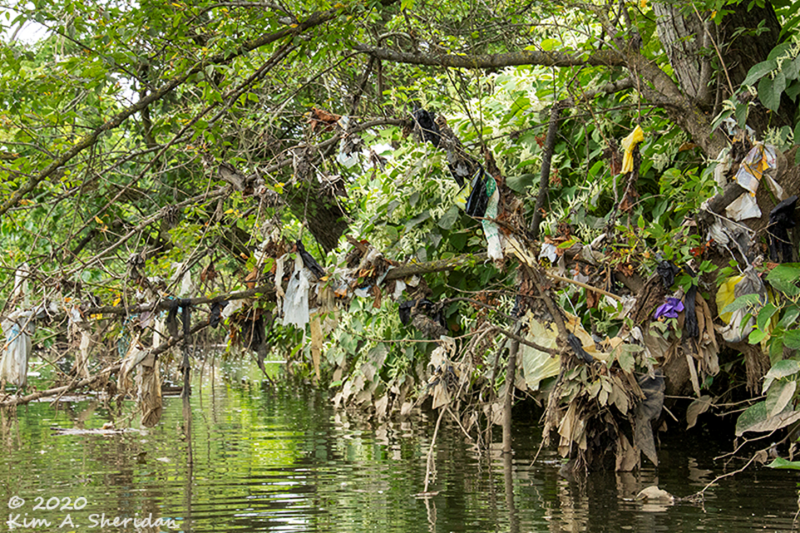Written by Carol Armstrong, Chester County
This year is the 50th anniversary of the passage of the Pennsylvania Environmental Rights Constitutional Amendment, which protects the environment for all current Pennsylvanians and future generations. The government is the trustee of Pennsylvania’s environmental resources, but we can celebrate this anniversary by adopting Zero Waste practices and trying to live more sustainably. In order for it to be successful at the level of government policy or community practices, individuals need to adopt it as a guide. Zero Waste requires a change in beliefs and expanded awareness. Zero Waste practices are built by facing the reality of the waste we produce, and making a commitment to reduce our waste. I will lay out the steps that I made to show the evolution in thinking that I had to make. My first step was to use an app such as MyPlasticDiary to count my plastic purchases, then see the food I was wasting. My next step was to measure in some quantitative way the amount of trash and recycling that I was putting out for my haulers to “disappear”. I also read more about what happens when plastic films and bags damage sorting equipment, how Material Recovery Facilities search for better ways to separate the trash they receive, how plastic producers keep changing the makeup of their products making recycling difficult, and how more and more trash is being burned. Then, I got to work on myself.

A big wake up call was when I learned from the fossil fuel and petrochemical industry leaders themselves that the amount of plastic produced would increase by four hundred percent over the next 30 years. I learned that six percent of fossil fuels are used for plastics now, and 20 percent of fossil fuels will be used for plastics by 2030. The demand for sustainable energy is increasing and the energy/petrochemical companies are looking for other outlets to profit from their commitments to oil and gas. The petrochemical industry is looking to increase their production of plastics and other chemical products as a way to create demand for the chemicals they extract from petroleum and gas, and thus maintain their business model of extracting earth’s remains of ancient marine resources (oil and gas) and the investments they’ve made including the loans they’ve taken to build several hundred new petrochemical facilities in the U.S. in the not so far future (see the one being built in Beaver, PA by Shell, and read the PA Dept. of Environmental Protection permit for this facility and the pollutants they can emit every year).
I used to think that those thin plastic bags given out by grocers, produce stands, and stores were not so bad if I used them a second time, such as for my garbage. But now that I realize there are so many problems with these bags, which are banned in many countries and cities, that I’ve made the commitment not to ever take another one again, and to change my purchasing habits to reduce the amount of single-use plastic packaging that I use. As a citizen scientist who does trash surveys in stream areas, I witness plastic films/packaging as one of the most prolific plastics escaped into our trees, stream banks, and water (see photo), which damage water and waste treatment facilities. Now I consider the packaging of every item I purchase to see if I can use it again and again. It was an eye opener for me to realize that, around the world and here in the U.S., plastic production of household goods and food is created by the supply, not the demand. There is so much useful material that I no longer throw away that I do not purchase any aluminum or plastic films or bags, and do not accept them for my store purchases. I have every kind of material I need for containing my food or for packaging something that came from packaging I was forced to receive.

Photo credit: Kim Sheridan 2020 of Darby Creek after a major storm, which shows the plastics that flow through our streams.
Plastics begin to degrade as soon as they are exposed to light, temperature, and movement. When they degrade they leach out the chemicals that are part of their production, the pollutants in the environment adhere to them including pathogens, and they emit greenhouse gases. Plastics are a vector for chemicals getting into our environment and bodies, and are a major cause of climate heating.
It is complicated to make commitments to reduce use of plastics. A study by Marazzi and colleagues (Consumer-based actions to reduce plastic pollution in rivers: A multi-criterion decision analysis approach, PLOS One, August 2020) found that even environmentally educated persons tend not to change their behavior if it is not convenient, even if they believe it is environmentally helpful. Approaches should look to lower barriers and overcome impediments as much as possible. Personally, I’ve found that my commitment came first, and then over time I’ve found more and more ways to reduce the power, toxicity, and waste involved in my actions. My trash bin is hauled away much less often now, usually once every 6-8 weeks. My recycling is primarily pet food cans. And, I am meeting the goal I set for myself in MyPlasticDiary of purchasing less than 10 kilograms of plastic packaging per year. To start your own journey in creating less waste, join the Sierra Club Zero Waste team to learn and build a repository of information on products that are more sustainable for everyday use.